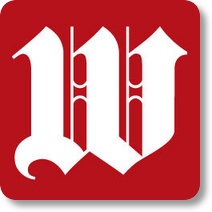The Washington Times |
|||||||||

|
|
||||||||
About |
|||||||||
|
The Washington Times is a daily broadsheet published at 3600 New York Avenue NE, Washington, D.C., United States. It was founded in 1982 by the founder of the Unification Church, Sun Myung Moon, and until 2010 was owned by News World Communications, an international media conglomerate associated with the church. The Washington Times was founded in 1982 by News World Communications, an international media conglomerate associated with the Unification Church which also owns newspapers in South Korea, Japan, and South America, as well as the news agency United Press International. Bo Hi Pak, the chief aide of church founder and leader Sun Myung Moon, was the founding president and the founding chairman of the board. Moon asked Richard L. Rubenstein, a rabbi and college professor who had written on the Holocaust, to serve on the board of directors. At the time of founding of the Times Washington had only one major newspaper, the Washington Post. Massimo Introvigne, in his 2000 book The Unification Church, said that the Post had been "the most anti-Unificationist paper in the United States."[4] In 2002, at an event held to celebrate the Times's 20th anniversary, Moon said: "The Washington Times is responsible to let the American people know about God" and "The Washington Times will become the instrument in spreading the truth about God to the world." The Times was founded the year after the Washington Star, the previous "second paper" of D.C., went out of business, after operating for over a hundred years. A large percentage of the staff came from the Washington Star. When the Times began, it was unusual among American broadsheets in publishing a full color front page, along with full color front pages in all its sections and color elements throughout. Although USA Today used color in the same way, it took several years for the Washington Post, New York Times, and others to do the same. The Times originally published its editorials and opinion columns in a physically separate Commentary section, rather than at the end of its front news section as is common practice in U.S. newspapers. It ran television commercials highlighting this fact. Later, this practice was abandoned (except on Sundays, when many other newspapers, including the Post, also do it). The Washington Times also used ink that it advertised as being less likely to come off on the reader's hands than the Post's. This design and its editorial content attracted "real influence" in Washington. When the Times began it had 125 reporters, 25 percent of them Unification Church members. In 1982 the Post criticized the Times for killing critic Scott Sublett's negative review of the movie Inchon, which was also sponsored by the Unification Church. A former speechwriter for President George W. Bush, David Frum, in his 2000 book How We Got Here: The '70s, wrote that Moon had granted the Times editorial independence. But some former employees, including the newspaper's first editor and publisher, James R. Whelan, have insisted that the paper was under Moon's control from the beginning. Whelan, whose contract guaranteed editorial autonomy, left the paper when the owners refused to renew the contract, asserting that "I have blood on my hands" for helping Moon acquire legitimacy. Three years later, editorial page editor William P. Cheshire and four of his staff resigned, charging that, at the explicit direction of Sang Kook Han, a top official of the Unification Church, then-editor Arnaud de Borchgrave had stifled editorial criticism of political repression in South Korea. |
|||||||||
|
|||||||||








